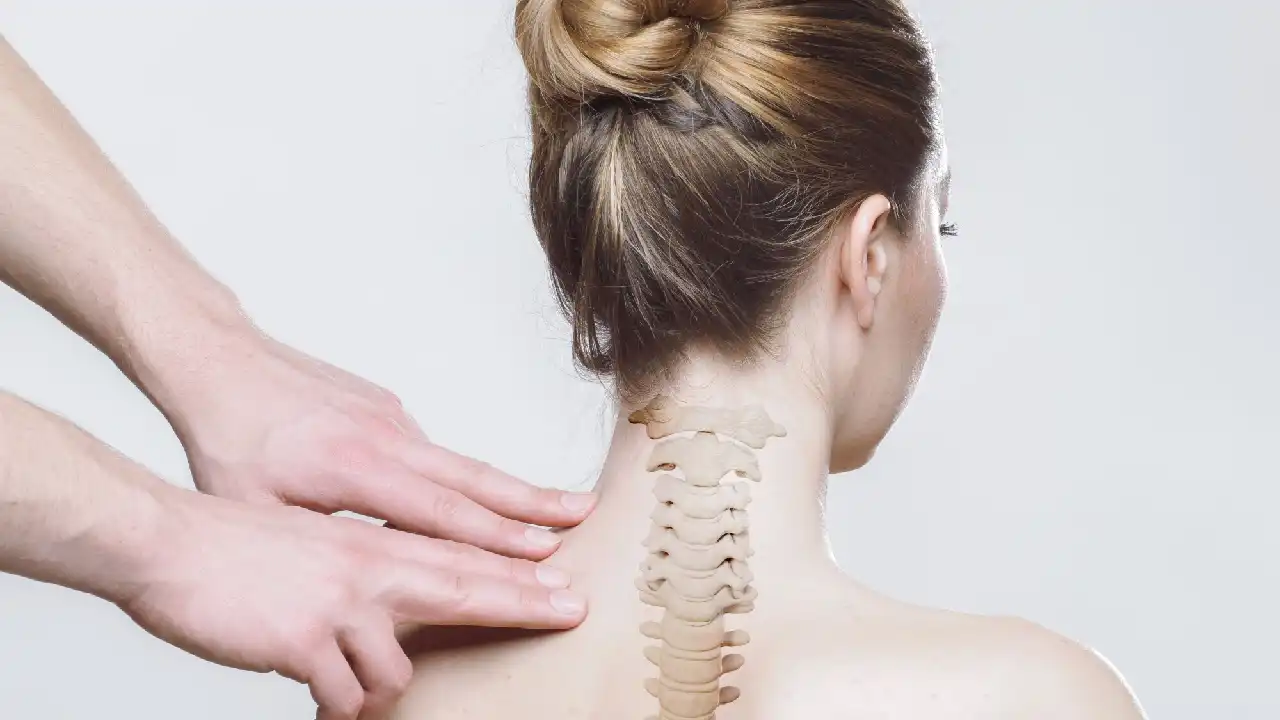HEALTH
What Is Spondylosis?

Spondylosis
Are you experiencing chronic back pain, stiffness, or discomfort in your neck, shoulders, or hips? If yes, it could be a sign of Spondylosis.
This condition is common among people who spend long hours sitting or have poor posture habits. But what is Spondylosis?
In this blog post, we’ll explore the definition, causes, symptoms, diagnosis, and Spondylosis treatment options for this condition. So if you want to learn more, read on!
Keep reading!
What is Spondylosis
Spondylosis is a degenerative condition that affects the spine’s vertebrae and joints. It is a natural aging process that happens over time. Spondylosis typically affects people above 40 years old and those with sedentary lifestyles.
The most common type of Spondylosis is cervical Spondylosis. It occurs when the discs between neck bones become thinner due to age or wear and tear. Thoracic Spondylosis affects the middle back, while lumbar Spondylosis impacts the lower back region.
Spondylitis causes pain, stiffness, numbness in extremities, muscle weakness, and loss of bladder control.
The severity may vary depending on individual cases; some experience mild symptoms while others have severe ones that may lead to disability.
Causes of Spondylosis
Spondylosis is a common condition that affects the spine. Various factors, including age, genetics, and lifestyle choices, can cause it.
One of the primary causes of Spondylosis is simply aging. As we age, our spinal discs lose water content and become less flexible. It makes them more prone to wear and tear over time.
Genetics can also play a role in developing Spondylosis. Some people may inherit certain traits or structural abnormalities that make their spines more susceptible to damage.
Lifestyle choices such as smoking and being overweight can also increase your risk of developing Spondylosis. Smoking reduces blood supply to spinal tissues.
Symptoms of Spondylosis
Spondylosis is a medical condition that affects the spine, causing degeneration of the discs between the vertebrae. The symptoms of Spondylosis can vary depending on which part of the spine is involved. It also depends on how severe the damage is.
One common symptom of Spondylosis is pain in the neck or back. This pain may be sharp or dull. It can occur intermittently or constantly. It may also radiate to other body parts, such as the arms, legs, and buttocks.
Another symptom of Spondylosis is stiffness in the affected area which may make it difficult to move. You may find that you cannot bend over or turn your head without experiencing discomfort.
In some cases, Spondylosis can cause nerve damage, leading to numbness or tingling sensations in various parts of your body. It can be particularly problematic if it affects your hands, feet, fingers, and toes.
Some people with advanced spongiosis experience muscle weakness and loss of coordination. It is due to compression of the spinal cord.
Spondylosis Diagnosis and Treatment
Diagnosing Spondylosis involves a physical exam, medical history review, and imaging tests. Your top spinal surgeon by Dr. Stieber, may ask you questions about your symptoms when they started, and any previous injuries or conditions related to your spine. They will perform a physical examination to check for range of motion, muscle weakness or spasms, and pain.
Understand What Spondylosis Is
So what is Spondylosis? It can be a life-changing condition. But if treated properly, it can be managed. Once you understand how to avoid it, you can continue living with an enhanced quality of life. If you think you may have Spondylosis, talk to your doctor or healthcare provider as soon as possible.
Explore our blog for more topics.
Having completed my education in English, I’ve cultivated a successful career as a content writer. My tenure includes valued collaborations with distinguished professional organizations, reflecting my commitment to producing high-quality content.
Contact me on this mail: [email protected]










